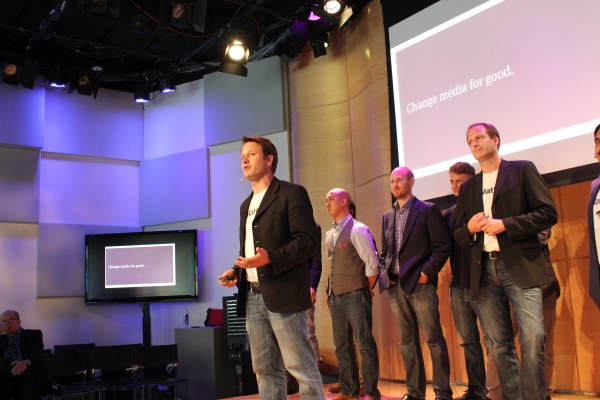Matter, the San Francisco-based accelerator and early-stage venture capital firm, held a Demo Day in New York today for its first class after an initial Demo Day last month in SF. Matter formed last year and is backed by the Knight Foundation and KQED, a public media network, with support from the Public Radio Exchange, PRX.
Matter invests in media startups, giving them $50,000 and five months to work on their products. As CEO Corey Ford said, it’s an attempt to figure out what new media will look like. Here’s a look at the six members of the first class, a cohort the accelerator is calling “Matter One”:
 ChannelMeter: A video analytics platform that aims to help publishers and brands grow their audiences. The service, which focuses on YouTube videos but will expand to other video platforms, is meant to be a cleaner version of YouTube analytics, which packages reports in ZIP files of Excel sheets. The system also enables users to slice their own data.
ChannelMeter: A video analytics platform that aims to help publishers and brands grow their audiences. The service, which focuses on YouTube videos but will expand to other video platforms, is meant to be a cleaner version of YouTube analytics, which packages reports in ZIP files of Excel sheets. The system also enables users to slice their own data.
Zeega: In its noun form, a Zeega is an embeddable combination of music, text, and GIFs. The audio plays continuously while viewers swipe through the GIFs; it’s essentially a music video creator that requires an artistic touch similar to that used on Vine. Some users are creating politicized stories, while others use it to make birthday cards for their friends. Zeega, which launched at Matter’s SF Demo Day, is also meant to serve publishers. The Atlantic and Mother Jones are already using Zeega, and today the team announced the launch of Zeega Publisher Pages.
![]() SpokenLayer: Debuting at TechCrunch Disrupt NY in May 2012, SpokenLayer provides a listening option for news articles. The team at SpokenLayer created a system in which they can send articles to their voice artists and have the voice artists send back the recordings. They have partnered with The New Republic (post redesign) and with Fast Company, and announced today that they will now be working with The Globe and Mail, TIME, Time Out, Tablet, M, Byliner, and Narratively. SpokenLayer is bootstrapped and has not announced a funding round yet; founder and CEO Will Mayo said that they have reached a revenue-generating point.
SpokenLayer: Debuting at TechCrunch Disrupt NY in May 2012, SpokenLayer provides a listening option for news articles. The team at SpokenLayer created a system in which they can send articles to their voice artists and have the voice artists send back the recordings. They have partnered with The New Republic (post redesign) and with Fast Company, and announced today that they will now be working with The Globe and Mail, TIME, Time Out, Tablet, M, Byliner, and Narratively. SpokenLayer is bootstrapped and has not announced a funding round yet; founder and CEO Will Mayo said that they have reached a revenue-generating point.

OpenWatch: Launched as a video platform for citizen journalism, OpenWatch is hoping to draw participants worldwide. In an era when so much “news” looks like press releases, OpenWatch is aiming for accountability by putting the news in people’s lives, particularly abroad. The app provides a map that shows who else is covering the event and what aspects of the story still need to be uncovered.

Mixation: Enables publications and individuals to create 24-hour TV stations, which exist on Mixation’s site and can also float on external sites. The idea is that the online video viewing experience is stilted, because it requires clicking and browsing. Mixation is hoping to work directly with publishers and is promising a jump in increased revenue (in the case of TechCrunch, $300,000 per month).

Inkfold: Inkfold is built on the idea that people send a lot of article links via email, and most of those articles never get read. Because people are busy. The iOS app, which goes live today, finds these links in your email and pulls them into an Inkfold inbox, where they show up as a stream of complete articles, rather than URLs. The app also has a chat function in which users can respond to the person who sent them the article and carry on the conversation.

